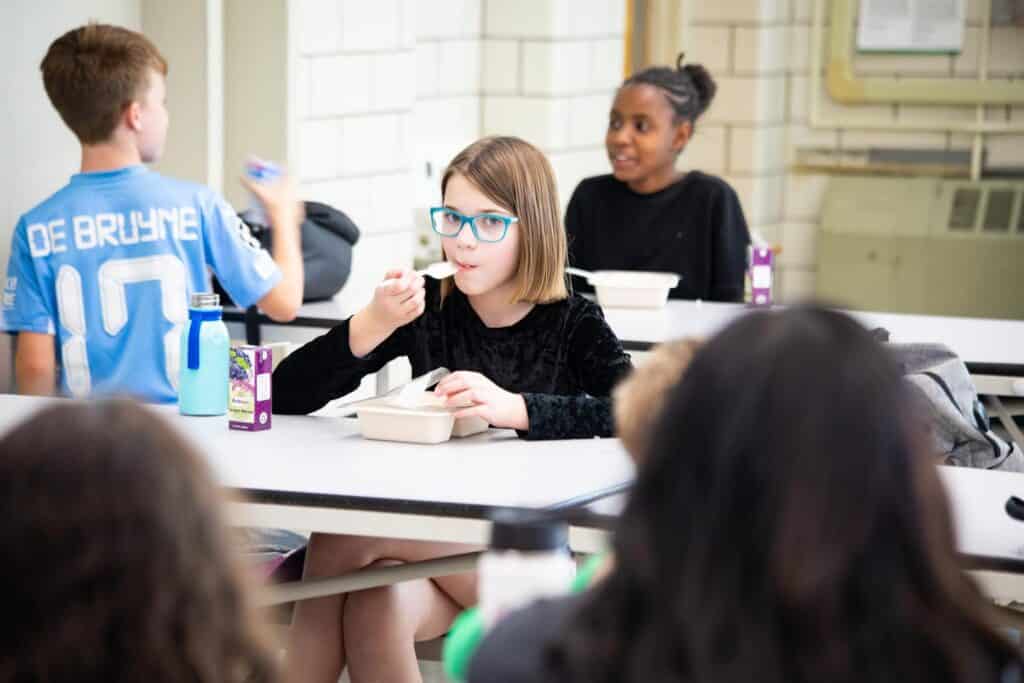
When it comes to images of food insecurity in popular culture, nothing seems to capture our attention quite like childhood hunger. From frail-looking youths on infomercials, to “Oliver Twist” and Tiny Tim in “A Christmas Carol,” childhood hunger never fails to tug at our heartstrings.
But beyond the imagery, how much do you actually know about the problem of childhood poverty and food insecurity? Despite the attention it receives in the media, childhood hunger is still a complex and widespread issue that can affect kids’ mental and physical health in the long term.
What to Know About Food Insecurity and Children
Here are the facts: According to Feeding America , 9 million children — one in every eight kids— were at risk for hunger (or “food insecurity”) in 2021. This food insecurity can manifest itself in a variety of ways. While some children may not directly experience hunger, they live in households where their parents, older siblings, or other relatives in the home must regularly skip or reduce meals to make ends meet. Other children may live in areas where access to nutritious food is extremely limited either due to geographic proximity or a lack of business investment in the community.
Childhood hunger and food insecurity are tied to a variety of socioeconomic factors, the most prominent being poverty. In a 2017 study published by Feeding America, counties in the United States with the highest rates of child food insecurity also had notably higher unemployment and poverty rates, and lower median incomes. Single-parent households face the challenge of feeding one or more children upon the income of just one adult, resulting in higher rates of food insecurity. No group was affected more by this trend than single-mother households, which experienced food insecurity at a staggering rate of 25% in 2021. Finally, there’s the issue of systemic racial injustice to contend with. According to the USDA’s “Household Food Security in the United States in 2021” report, 18.5% of Latino children and 22% of Black children were food insecure last year — a much higher rate than their white counterparts.
Why Does Food Insecurity Matter?
Inadequate nutrition can result in troubling consequences for kids’ health at nearly every stage of childhood development. Studies cited by Feeding America show that food-insecure mothers are more likely to experience low infant birth weight and other birthing complications. Children who are living with food insecurity are more likely to develop asthma and anemia, as well as experience stunted development, hospitalizations, and oral health problems. More troubling still, exposure to food insecurity and its accompanying socioeconomic conditions are linked to childhood mental health challenges — including anxiety and aggression — which can further limit a kid’s ability to be a productive student.
What Action is Being Taken Against Food Insecurity for Children?
So what exactly is being done to combat childhood food insecurity? Federal nutrition programs such as the Supplemental Nutrition Assistance Program (better known as SNAP), Child Nutrition programs , and Special Supplemental Nutrition Program for Women, Infants, and Children (WIC) serve as a first line of defense against childhood hunger, but many food-insecure kids live in households that aren’t eligible for these kinds of benefits. School nutrition programs have proved to be another effective solution for feeding kids, with upwards of 22 million children receiving assistance via the National School Lunch Program at the latest count, and many others receiving additional meals such as school breakfast or taking advantage of summer food service programs when school is not in session.
Throughout the year here in Wyoming, Food Bank of Wyoming’s Totes of Hope™ Program distributes upwards of 1,400 bags of food to kids and their families every week via 16 sites across the state. These totes contain enough nutritious, shelf-stable and fresh food to make roughly seven household meals, helping to bridge the gap in meal access many kids face when school is out of session.
Fighting childhood food insecurity has always been a complicated process, but you can make a difference. We encourage you to donate any funds and/or time as you’re able to your local food bank or program that helps nourish the kids in our communities. Together, we can one day banish childhood hunger to the realm of fiction.
To donate to Food Bank of Wyoming, click here. Thank you!
P.S. If you or someone you know is in need of food, you can locate a Food Bank of Wyoming Mobile Pantry or Hunger Relief Partner near you using our Find Food page.



